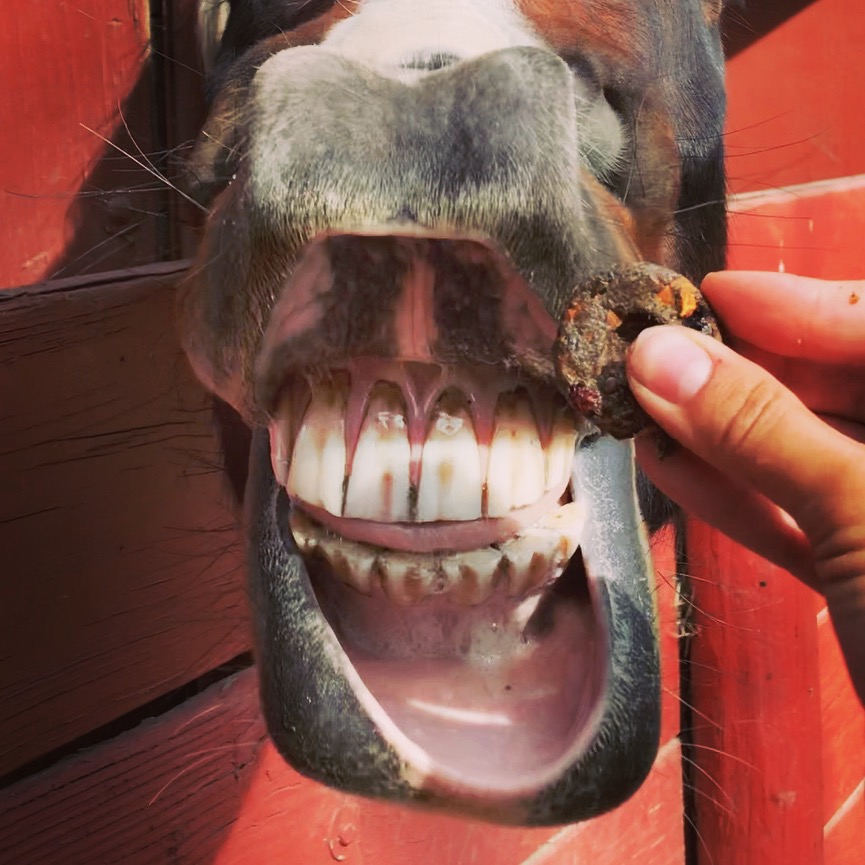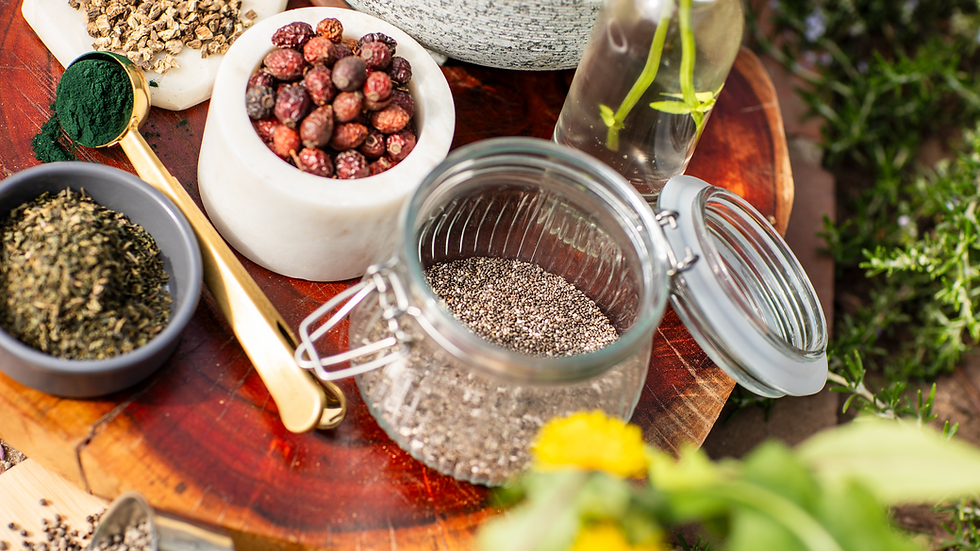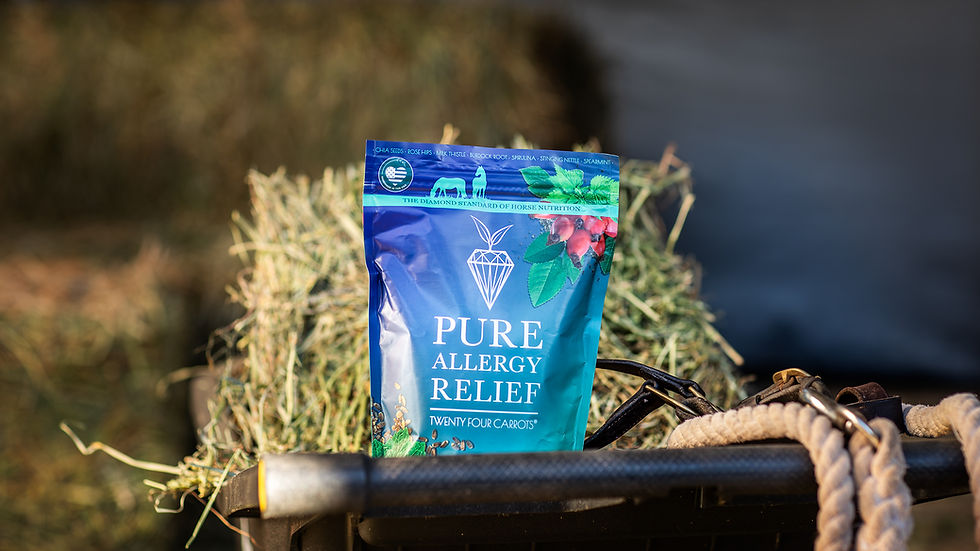Clean, Clear, and Chemical-Free: Herbal Allergy Support for Horses
- Twenty Four Carrots

- Jul 23, 2025
- 6 min read
Updated: Aug 4, 2025
Hello summer and hello allergies! It’s that time of the year when mysterious hives and runny noses seem to pop up out of nowhere. These are common signs of seasonal allergies—also known as allergic rhinitis or hypersensitivity reactions. If left unaddressed, these symptoms can severely impact your horse’s respiratory health, immune function, skin condition, and performance in the ring.
That’s why it’s important to go beyond simply masking these symptoms with pharmaceuticals and instead focus on building long-term resilience. One of the most promising and natural strategies is herbal therapy, which supports your horse's body on a systemic level. But before we dive into the herbal allies, let’s take a look at what’s really behind seasonal allergies in horses.
Understanding Seasonal Allergies in Horses
Seasonal allergies in horses can be triggered by various environmental allergens, including:

Tree, grass, or weed pollen
Mold spores
Dust mites
Insect bites (especially Culicoides midges)
Bedding particles and barn dust
Airborne pollutants
Certain feeds and preservatives
When a horse encounters an allergen, their immune system may respond excessively, treating the harmless substance as a threat. This overreaction leads to the release of histamines and inflammatory cytokines, causing symptoms like:
Hives
Runny nose
Coughing or wheezing
Itchy eyes or skin
Nasal discharge
Poor coat condition
Lethargy or mood changes
Diagnosis of Allergies
Veterinary diagnostics may include intradermal testing or serum allergy testing to identify specific allergens. However, these can be expensive and sometimes inconclusive due to the complexity of allergic responses. That’s why many horse owners take a more holistic and preventative route: targeting the immune system itself.
This approach is often referred to as the Whole Horse Approach. It combines immune modulation, detoxification support, dietary improvements, environmental adjustments, and herbal supplementation.
The Importance of Herbal Therapy
Herbs have been used for centuries across many cultures to help treat allergies and chronic inflammatory diseases. In equine wellness, herbal therapies are gaining increasing popularity due to their gentle, effective, and holistic properties.
1. Herbs Regulate Rather Than Suppress
Conventional allergy treatments like corticosteroids and antihistamines offer immediate relief but may come with long-term risks:
Immune suppression
Laminitis (linked to corticosteroid use)
GI ulcers
Hormonal imbalances
Rebound inflammation
In contrast, herbs modulate the immune response. That means they support the body in finding balance rather than shutting down its defense mechanisms. According to Getty Equine Nutrition, herbs help the immune system better "read" what is harmful and what is not, reducing the overreaction that leads to allergies.
2. Herbs Address the Root Causes
Many allergy symptoms arise from three core dysfunctions:
Chronic inflammation
Impaired detoxification (especially liver overload)
Histamine overproduction
Herbal support targets all three:
Anti-inflammatory herbs calm tissues and reduce swelling.
Liver-supportive herbs promote detox and help clear allergens.
Natural antihistamines reduce allergic sensitivity without adverse effects.
3. Herbs Are Multi-Systemic and Safer
Herbs often provide synergistic effects, supporting not just one, but multiple systems in the body:
Immune: modulates reactivity
Respiratory: supports clearer airways
Digestive: enhances nutrient absorption and gut balance
Integumentary (skin): promotes healing and reduces itching
Because herbs work with the body (not against it), they are generally gentler and more sustainable than pharmaceutical options for long-term use.
Herbal Allies for Seasonal Allergies
Ready to meet nature’s allergy warriors? These herbs have shown both anecdotal and scientific promise in supporting horses with seasonal allergies:
Nettle (Urtica dioica)
Nettle is a mast cell stabilizer, meaning it helps prevent the release of histamine—the compound responsible for itchiness and inflammation. A 2009 study published in Phytotherapy Research showed nettle extract affects multiple receptors and enzymes involved in allergic rhinitis (Roschek et al. 2009). It’s also rich in nutrients like iron, silica, and chlorophyll, making it a great tonic for horses with poor skin or coat quality.
Spirulina (Arthrospira platensis)
This blue-green algae is a superfood for the immune system. According to Nemoto-Kawamura et al. (2004), spirulina has been shown to lower IgE antibody levels, the main antibodies involved in allergic reactions, while enhancing protective antibodies like IgA and IgG. Spirulina also promotes lung function by reducing oxidative stress and inflammatory mediators in respiratory tissue.

Bonus: Spirulina has been researched in both human and animal studies as a potent anti-inflammatory and antioxidant (Romay et al. 2003).
Milk Thistle (Silybum marianum)
The active compound in milk thistle, silymarin, has been shown to stabilize liver membranes, reduce inflammatory cytokines, and support liver detoxification. Since many allergic reactions are worsened by poor toxin clearance, enhancing liver function can indirectly lower allergic responses. Silymarin also shows protective effects on bronchial tissue in animal models.
Rose Hips (Rosa canina)
Rose hips are one of nature’s best sources of vitamin C, a mild but effective natural antihistamine. They’re also loaded with flavonoids that reduce oxidative stress in inflammatory tissues. A 2016 study by Christensen et al. confirmed their anti-inflammatory role in joint and skin conditions in both animals and humans. Vitamin C also aids in collagen synthesis, helping to maintain skin integrity during flare-ups.
Chia Seeds (Salvia hispanica)
Chia seeds are rich in Omega-3 fatty acids, which are well documented to reduce inflammatory mediators like prostaglandins and cytokines. According to recent veterinary nutrition studies (Burron et al., 2024), omega-3s improve lung elasticity and reduce bronchial inflammation in horses with recurrent airway obstruction (RAO). Chia seeds also promote healthy skin barrier function, lowering sensitivity to external allergens.
Burdock Root (Arctium lappa)
Burdock is a well-known detoxifying herb that purifies the blood, supports the lymphatic system, and improves liver clearance. It’s particularly helpful in horses with allergic dermatitis or urticaria (hives). In a 2010 review published in Inflammopharmacology, burdock demonstrated antioxidant, anti-inflammatory, and anti-microbial properties (Chan et al. 2010).
Spearmint (Mentha spicata)
Spearmint contains rosmarinic acid, which has powerful anti-inflammatory and antihistamine-like effects. According to Wang et al. (2017), this compound significantly reduces inflammation in the airways and nasal passages, making it a great herb for horses with respiratory allergies or sinus congestion. Plus, horses tend to love the taste!
One Simple Solution: Pure Allergy Relief

All these herbal ingredients—nettle, spirulina, milk thistle, rose hips, chia seeds, burdock, and spearmint—can be found in Twenty Four Carrots’ Pure Allergy Relief. This all-in-one blend is carefully formulated to modulate your horse’s immune system, reduce inflammation, and support whole-body resilience during allergy season. Whether your horse suffers from coughing, hives, or just general “blah” during spring and summer, this product gives you a safe and natural solution to keep them performing and feeling their best.
Supporting the Whole Horse: Lifestyle Tips for Allergy Management
While herbs play a crucial role, they work best in combination with other supportive practices. Here are several holistic strategies to help your horse fight off seasonal allergies:
1. Feed a Well-Balanced Diet
Use high-quality hay and pasture.
Avoid feeds with artificial preservatives or fillers.
Include Omega-3 supplements to reduce inflammation.
Add probiotics to enhance gut immunity.
2. Support Liver and Gut Health
Rotate in liver herbs like milk thistle, burdock, and dandelion root seasonally.
Consider short detox courses in spring and fall.
Ensure gut health with pre- and probiotics to reduce overall immune load.
3. Modify the Environment
Choose dust-free bedding (e.g., wood pellets or paper bedding).
Improve barn ventilation to reduce mold spores and ammonia.
Use HEPA air filters in high-traffic barns.
Rinse horses after turnout to remove pollen from coats.
Clean water and feed buckets daily.
4. Regular Vet Consultation
While herbs and holistic care are powerful tools, it’s essential to work with your equine veterinarian to monitor symptoms and ensure there are no underlying health conditions. Some allergy-like symptoms could be early signs of chronic obstructive pulmonary disease (COPD), heaves, or even skin infections.
The Bottom Line
Seasonal allergies don’t have to sideline your horse—or your peace of mind. By embracing a natural and science-backed approach, you can reduce your horse’s suffering and build long-term immune resilience. Herbs offer a gentler, smarter alternative to pharmaceuticals. When combined with good nutrition, environmental management, and regular veterinary care, they can provide lasting relief and help your horse thrive year-round.
When in doubt, consult a holistic veterinarian or equine nutritionist to tailor a program that fits your horse’s unique needs. And if you’re looking for a powerful starting point, Pure Allergy Relief by Twenty Four Carrots makes it easy to bring your horse back into balance.
Sources
Christensen, R., et al. “The Role of Rose Hip (Rosa Canina L.) Powder in Alleviating Arthritis Pain: A Randomized, Double-Blind, Placebo-Controlled Clinical Trial.” Biologics: Targets & Therapy, vol. 10, 2016, pp. 251–259. Dove Medical Press, https://www.dovepress.com/the-role-of-rose-hip-rosa-canina-l-powder-in-alleviating-arthritis-pai-peer-reviewed-fulltext-article-BTAT.
Chan, Y.-S., et al. “A Review of the Pharmacological Effects of Arctium Lappa (Burdock).” Inflammopharmacology, vol. 19, no. 5, 2010, pp. 245–254, https://pubmed.ncbi.nlm.nih.gov/20981575/.
Getty Equine Nutrition. “Quiet Your Horse’s Allergies through Herbs and Key Nutrients.” Getty Equine Nutrition, https://gettyequinenutrition.com/pages/quiet-your-horse-s-allergies-through-herbs-and-key-nutrients.
Romay, C., et al. “C-Phycocyanin: A Biliprotein with Antioxidant, Anti-Inflammatory and Neuroprotective Effects.” Current Protein & Peptide Science, vol. 4, no. 3, 2003, pp. 207–216, https://pubmed.ncbi.nlm.nih.gov/15242017/.
Roschek, B., Jr., et al. “Nettle Extract (Urtica Dioica) Affects Key Receptors and Enzymes Associated with Allergic Rhinitis.” Phytotherapy Research, vol. 23, no. 7, 2009, pp. 920–926, https://pubmed.ncbi.nlm.nih.gov/19140159/.
Wang, Q., et al. “Metabolic Engineering of Terpene Biosynthesis in Plants Using a Trichome-Specific Transcription Factor MsYABBY5 from Spearmint (Mentha Spicata).” Plant Biotechnology Journal, vol. 14, no. 7, 2016, pp. 1619–1632, https://onlinelibrary.wiley.com/doi/full/10.1111/pbi.12525.



I really appreciate the approach to using natural and herbal solutions for horses' allergies. It's a great reminder that what we put into our bodies—or our animals' bodies—really matters. It’s the same for our environment. When we think about winter maintenance, using eco-friendly products, like snow and ice melt, can make a big difference in preserving the surrounding areas. Just like with herbal remedies, it’s important to choose solutions that are effective but also gentle on the environment. Whether it’s for our pets or our properties, making mindful choices is always the best path.